How to Tell if Something is Silver: A Beginner’s Guide
18/01/2024Daniel Fisher
Free & fully insured UK Delivery. Learn more
Secure & flexible payments. Learn more

Buyback Guarantee Learn more
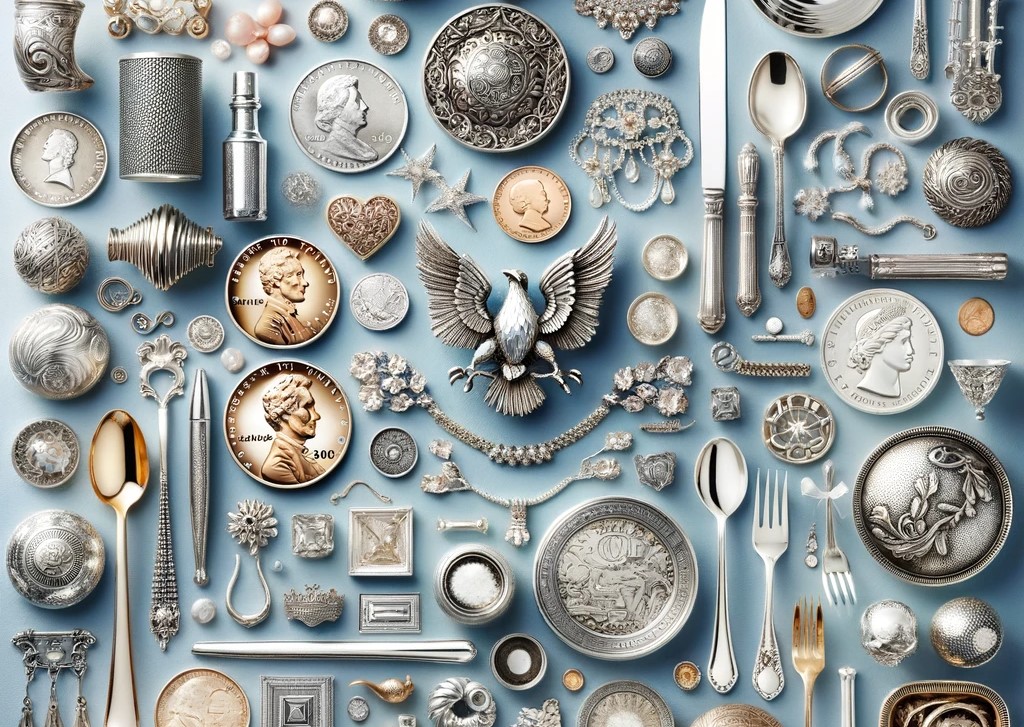
Whether you’ve inherited a piece of jewellery, stumbled upon a shiny coin, or found an antique candlestick in the attic, identifying whether it’s made of silver is a valuable skill. Many silver-looking objects are made from cheaper metals, impacting the value if you wished to sell the piece. Conversely, the use of platinum, white gold or palladium actually render the item more valuable than if it were constructed of silver.
In this straightforward guide, we’ll walk you through practical methods that don’t require a chemistry degree. From understanding the unique characteristics of pure silver to simple DIY tests, you’ll soon be equipped to distinguish the real deal from imitations.
Determining whether an item is authentic silver involves recognizing its distinctive characteristics and decoding the marks it bears. By familiarizing yourself with both the characteristics of pure silver and the significance of hallmarks, you’ll gain valuable insights into whether your item is the real deal or a clever imitation. Let’s break down these essential aspects.
Silver possesses some inherent traits that set it apart from other metals. One notable characteristic is its unmistakable lustre—a brilliant shine that’s hard to replicate. Pure silver is also relatively soft, making it easy to bend. However, this malleability can lead to scratches and dents over time. As you inspect an item, keep an eye out for these tell-tale signs.
Due to pure silver’s softness, even items made with genuine silver will likely be mixed with a low percentage of other metals to strengthen the object. So the likelihood of your item being 100% silver is low, but that doesn’t mean it doesn’t possess value. An optimum metal mix for many silver-made objects is 92.5% silver, deeming the alloy resilient and practical, yet retaining silver’s lustre.
In some cases, items may have a layer of silver plating over a base metal core. This process involves depositing a thin layer of silver onto the surface of another metal to enhance aesthetics or durability. While silver-plated items may exhibit some silver-like qualities, they differ from solid silver in terms of weight and long-term durability.
When inspecting an item, be aware that signs of wear, revealing a different metal beneath the surface, may indicate silver plating. The magnet test discussed below, in particular, can be useful in distinguishing between solid silver and silver-plated items, as silver-plated objects may have magnetic cores.
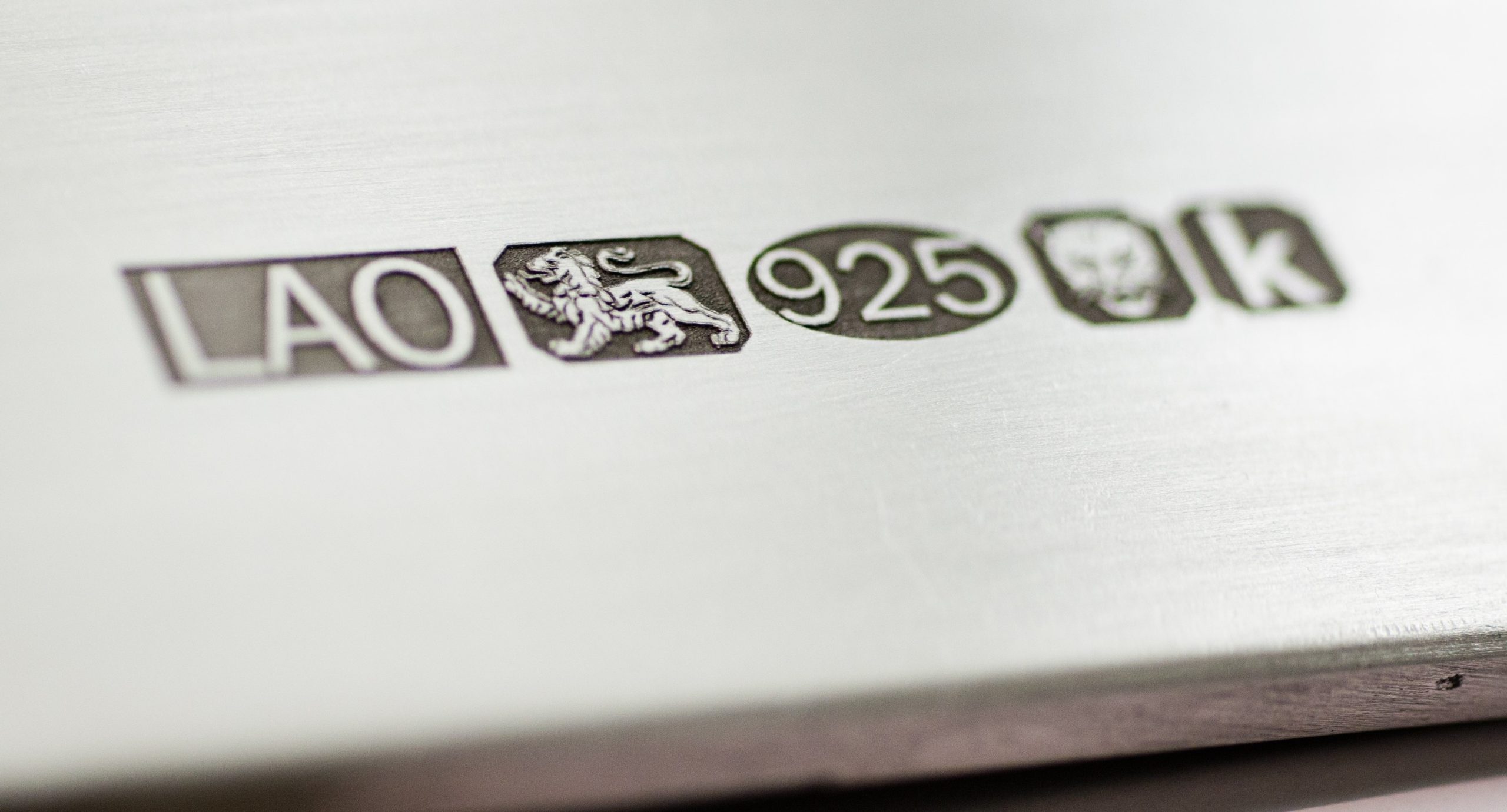
5 mintmarks can determine maker, precious metal, fineness, assay office and date
One of the most reliable indicators of genuine silver is the presence of hallmarks or stamps. These marks, often located in inconspicuous areas like the inner side of jewellery or the underneath of ornaments, carry vital information. Common hallmarks include numbers, symbols, or letters that denote the silver content, manufacturer, and sometimes the location or year of production.
For instance, a “925” hallmark signifies that the item contains 92.5% pure silver, a standard known as sterling silver. “Sterling” or “925” stamps are frequently encountered on silver jewellery. Learning to interpret these marks is like deciphering a secret code that unlocks the history and authenticity of your silver possessions.
Various jurisdictions have legal hallmarking systems and requirements which provide guidelines to silver manufacturers. In 1973, the United Kingdom introduced the Hallmarking Act, requiring precious metal items, including silver, to bear official hallmarks for quality assurance. The minimum hallmarking requirement is to record the 3 areas of the metal’s purity, origin, and the maker’s mark. Many silver products exceed this minimum to also include a production date and confirm which precious metal the item is made from. Notable exemptions from the hallmarking obligations are coins and investment bars.
While the UK follows a strict hallmarking system, the United States relies more on voluntary hallmarking by manufacturers, leading to a less standardized approach. Additionally, the International Hallmark Convention aims to establish a common system for hallmarking precious metals across participating countries.
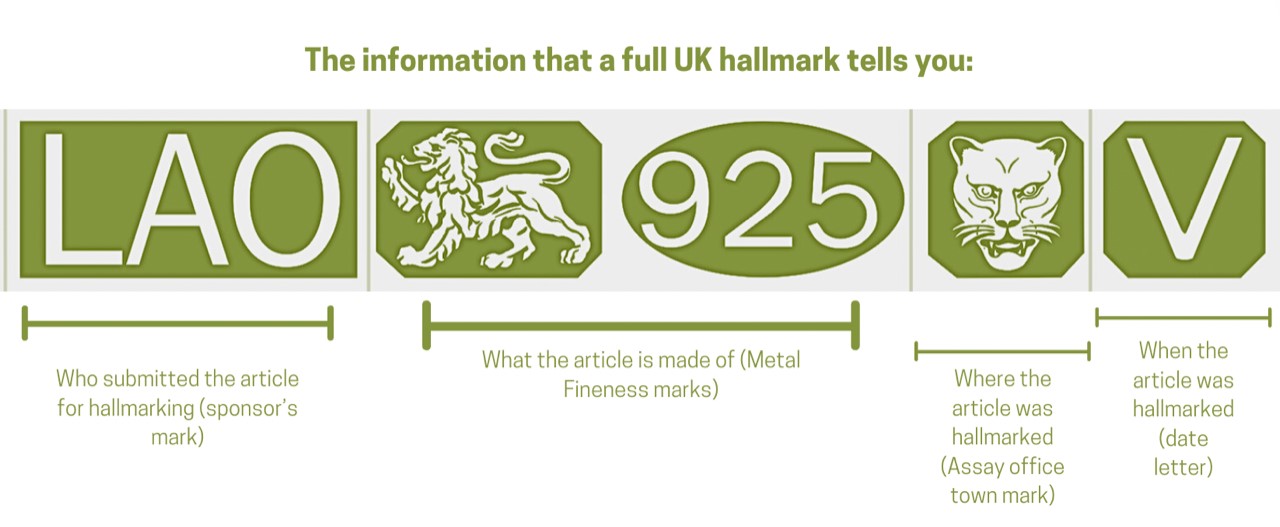
A Full UK Hallmark displays 'Maker', 'Traditional Fineness' 'Millesimal Fineness', 'Assay office', and 'Date Letter Mark'
4 simple steps to sell your silver coins
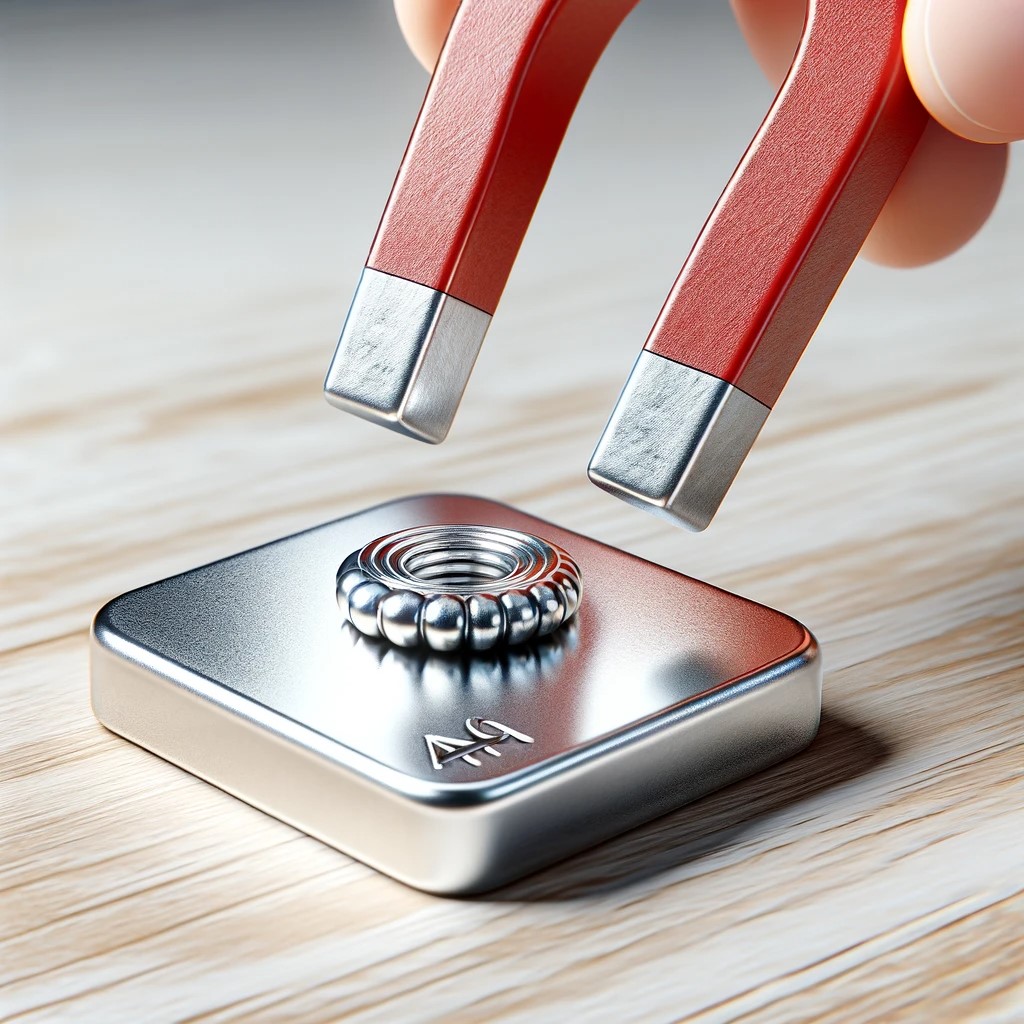
When it comes to distinguishing real silver from other metals, the magnet test is a straightforward method that requires nothing more than a common magnet.
Silver is a non-ferrous metal, meaning it doesn’t contain iron, which is what magnets are attracted to. This fundamental principle forms the basis of the magnet test. By observing how silver reacts to a magnet, you can quickly assess its authenticity. Genuine silver, being non-magnetic, will not be drawn to the magnet.
This test is particularly handy for items like jewellery or coins, where you can easily bring a magnet close to the surface without causing damage. Keep in mind that while the magnet test is a useful initial step, it should be complemented by other methods for a comprehensive evaluation.
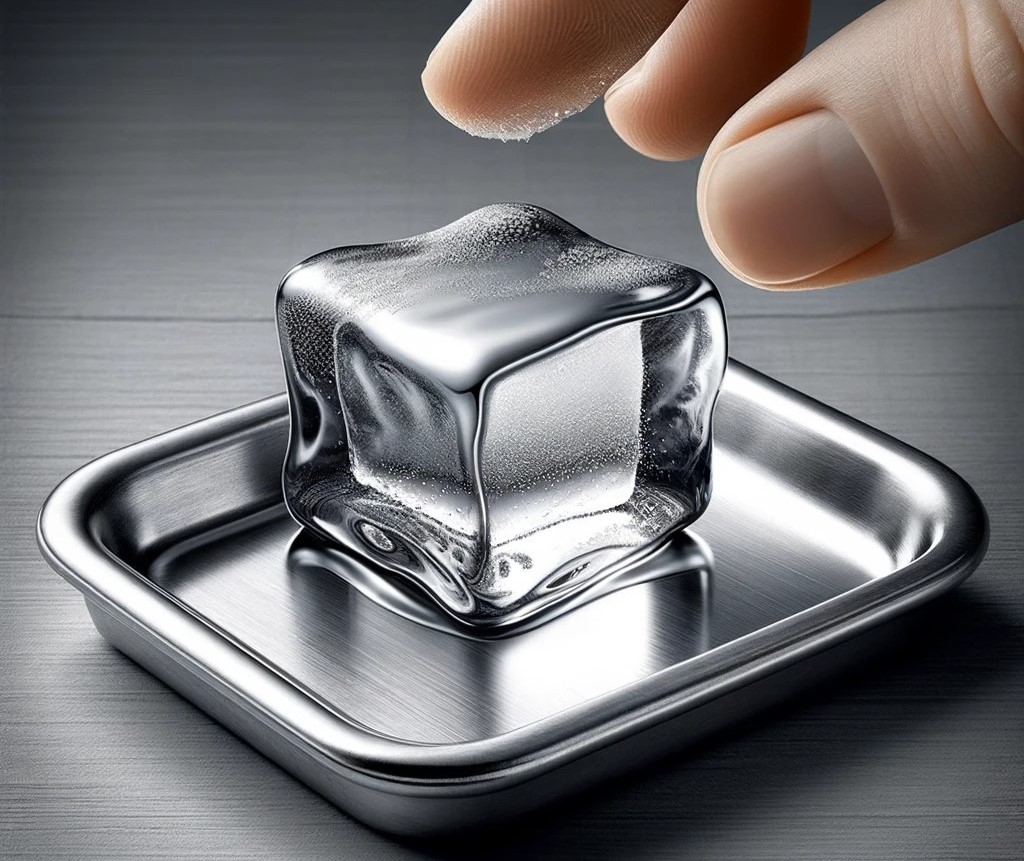
In your quest to verify the authenticity of silver, the ice test provides a practical and straightforward method that won’t harm your item.
The ice test aims to leverage the exceptional thermal conductivity of silver. This metal conducts heat more efficiently than many other materials.
The principle is straightforward: silver’s high heat conductivity causes ice to melt rapidly when in contact with the metal. This quick melt is a distinctive trait that helps differentiate silver from other substances.
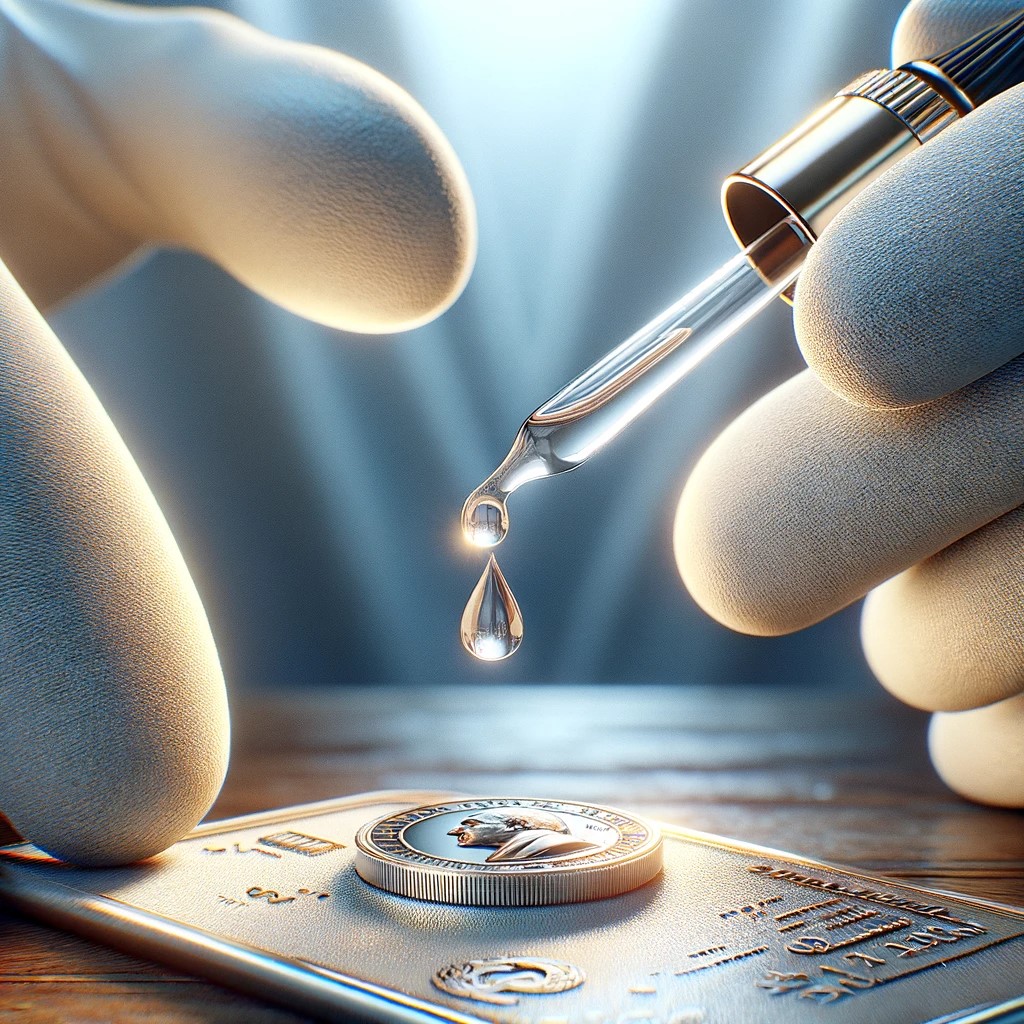
For those seeking a more scientific approach to confirm the authenticity of silver, nitric acid testing is a reliable method.
Nitric acid testing is a method that was historically used as a conclusive method of testing silver. This chemical test helps identify the presence of other metals in an alloy, which can be crucial for assessing the authenticity of an item.
However, due to its corrosive nature, the approach leads to a degree of damage to the object. Since the introduction of sophisticated testing equipment such as spectrometers, industry professionals no longer resort to the use of acid.
For the same reasons, combined with the caution needed when handling corrosive acid, this test is a last resort.
Free ultimate guide for keen precious metals investors
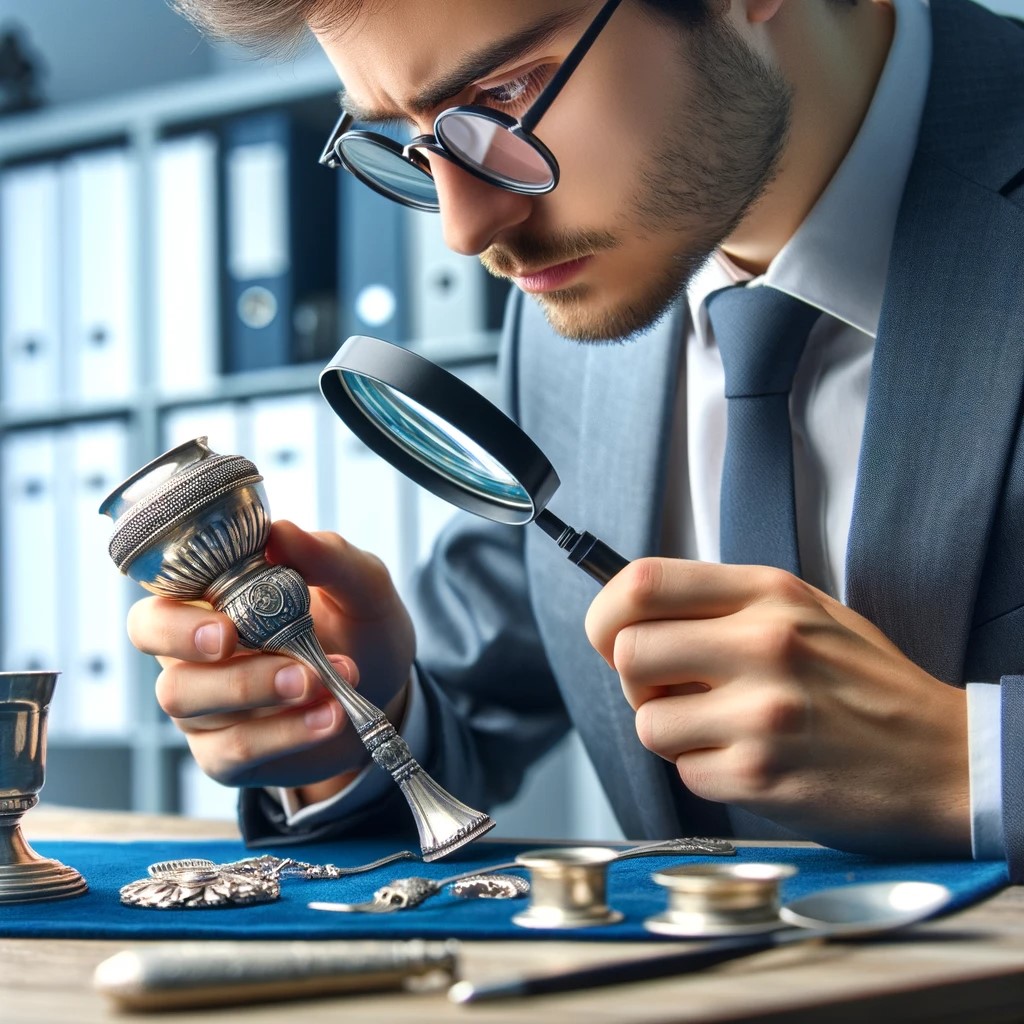
For those who prefer to leave the assessment of silver authenticity to the experts, professional appraisal and testing services offer a reliable solution. At Physical Gold, we’re able to use sophisticated technology such as the SkyRay EDX 3000 Plus Spectrometer and the handheld Niton XL2 precious metals analyzer.
Identifying genuine silver may seem like a daunting task, but armed with a basic understanding of silver’s characteristics and practical testing methods, it’s possible to determine if your item contains silver.
For those seeking a more definitive answer or dealing with valuable pieces, professional appraisal services are advised. If you’re looking to sell silver, contact our team on 020 7006 9992.
To check if something is real silver, use a magnet. Silver is non-magnetic, so if the magnet sticks strongly, it’s not silver. Look for hallmarks like ‘925’ and conduct additional tests for a comprehensive evaluation.
Yes, pure silver has a distinct lustre and is malleable. It is soft and easily scratched. Additionally, silver exhibits higher thermal conductivity, making it a unique metal with recognizable characteristics.
Yes, silver-plated items may not be magnetic. While silver itself is not magnetic, a strong attraction to a magnet suggests a ferromagnetic core, indicating the item is not pure silver. For a comprehensive assessment, consider additional tests like nitric acid.
Professional appraisal for silver items is essential for accurate valuation, especially with valuable or sentimental pieces. Appraisers provide certified assessments crucial for legal, insurance, or selling purposes, offering expertise and reliability beyond DIY methods.
Choose a reliable appraiser for your silver items by looking for certifications, specialization in silver, transparent fee structures, positive reviews, and a proven track record. Ensure they possess expertise specific to silver appraisal for accurate and trustworthy assessments.
Live Gold Spot Price in Sterling. Gold is one of the densest of all metals. It is a good conductor of heat and electricity. It is also soft and the most malleable and ductile of the elements; an ounce (31.1 grams; gold is weighed in troy ounces) can be beaten out to 187 square feet (about 17 square metres) in extremely thin sheets called gold leaf.
Live Silver Spot Price in Sterling. Silver (Ag), chemical element, a white lustrous metal valued for its decorative beauty and electrical conductivity. Silver is located in Group 11 (Ib) and Period 5 of the periodic table, between copper (Period 4) and gold (Period 6), and its physical and chemical properties are intermediate between those two metals.